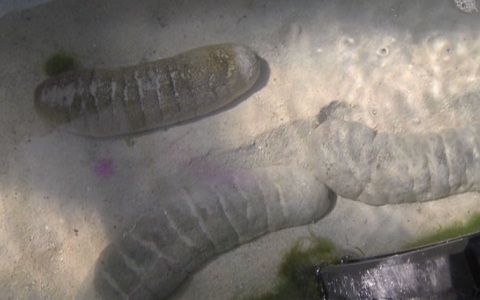Fifteen minutes boat ride from the Fisheries college water front facilities in Kavieng lies the beautiful Nago Island, Mari-culture and Research Facility.
It is here where local scientists and international experts are spawning or increasing the numbers of the Sandfish, a species of the sea cucumber.
As it is difficult to determine the female species, the Sandfish are taken collectively from the sea and bred in tanks. It’s only in time that the sea cucumbers start to increase.
Depending on the different stages of their growth, the sea cucumbers are placed in various tanks according to their physical development. These tanks are filled with sea water and together with a condusive temperature and the right kind of food, the population is said to grow exceptionally well.
Among the local scientists and technical staff is Rowan, a scientist from James Cook University. He has been growing micro-organisms to feed the sea cucumber larvae in the tanks.
The hatchery culture program so far is progressing well. It is an important process as it determines the growth rate and survival of the sea cucumber.
Sea cucumbers are used in either fresh or dried forms and are a delicacy the world over. As a result the sea creature has been over fished.
As the ban imposed by the National Fisheries Authority on the harvesting of sea cucumber is still current, it is anticipated that the research on Nago Island will ensure sufficient supply once the ban is lifted.
https://youtube.com/watch?v=srW3j_feOIk%3Ffeature%3Doembed%26wmode%3Dopaque%26showinfo%3D0%26showsearch%3D0%26rel%3D0


